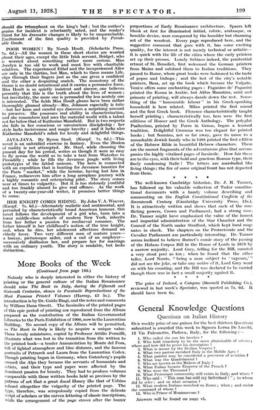The well-known Cambridge historian, Dr. J. R. Tanner, has followed
up his valuable collection of Tudor constitu- tional documents with a handy volume describing and commenting on the English Constitutional Conflicts of the Seventeenth Century (Cambridge University Press, 15s.). It is attractively written and shows that each of the con- flicting powers, Crown and Parliament, had a strong case. Dr. Tanner might have emphasized the value of the honest and impartial administration of the Star Chamber and the Council of the North under Strafford, which kept local mag- nates in check. The chapters on the Protectorate and the Cavalier Parliament are particularly interesting. Dr. Tanner seems inclined to believe Bumet's comic story of the passing of the Habeas Corpus Bill in the House of Lords in 1679 by a narrow majority. Lord Grey, telling for the Bill, counted a very stout peer as ten ; when he found that the other teller, Lord Norris, " being a man subject to ' vapours,' " did not see the joke, or take any notice of it, Lord Grey went on with his counting, and the Bill was declared to be carried though there was in fact a small majority against It.
* * • •




























 Previous page
Previous page